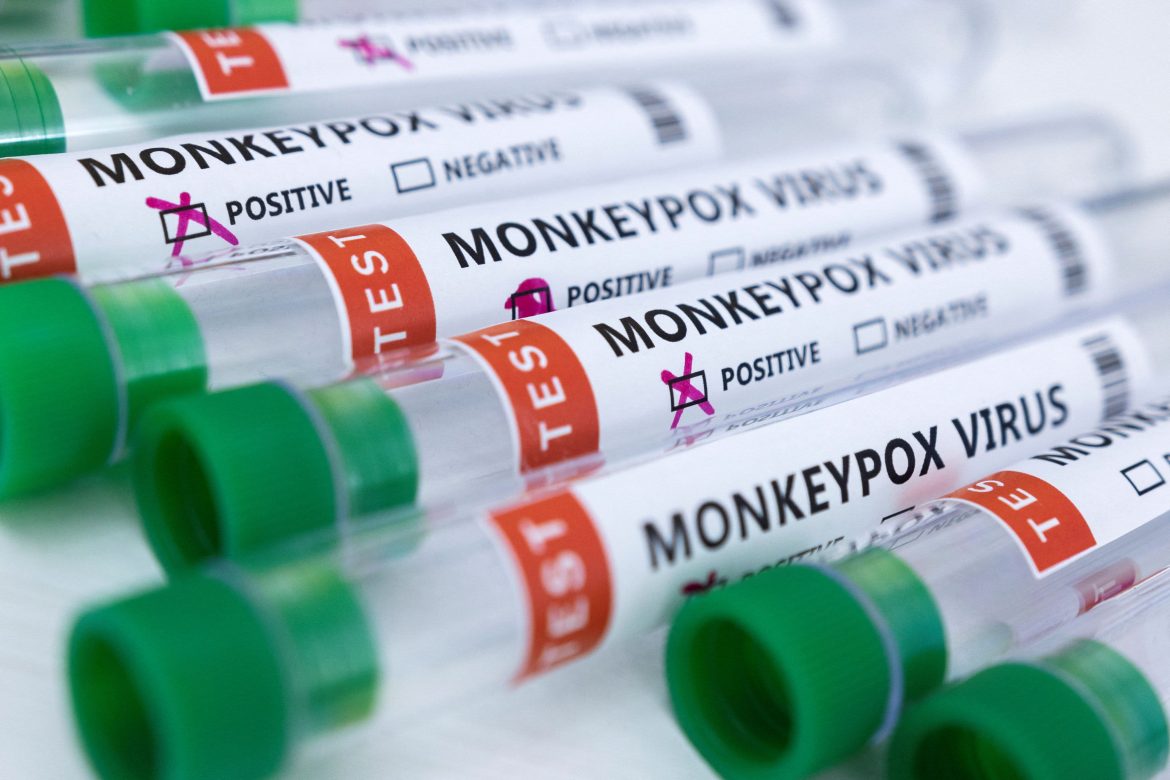Following the dagnosis of a monkeypox outbreak in the state, the Center sent a high-level team to Kerala. They arrived in the state’s capital, Thiruvananthapuram, on Saturday.
Today, a multidisciplinary team came at the Directorate of Health Services to assess the current situation and suggest any required changes. Among the team members are Sanket Kulkarni, Joint Director of the National Center for Disease Control, and P Ravindran, Advisor to the Health Ministry.
In response to a confirmed incidence of monkeypox in Kerala’s Kollam district, the Central team was dispatched by the Union Health Ministry to the state. There, they worked with the state health authorities to implement public health measures.
The central team is also likely to visit Kollam. “We will come comment here once we get instructions from the government. Yes we may go to Kollam,” said Advisor (Ministry of Health) P Raveendran.
The patient with monkeypox had arrived in Kerala from the UAE and tested positive for the viral disease on Thursday.
He is currently in isolation undergoing treatment at the Government Medical College hospital in Thiruvananthapuram.
The Central team has experts drawn from the National Centre for Disease Control (NCDC), RML Hospital, New Delhi and senior officials from the Ministry of Health and Family Welfare along with experts from the Regional Office of Health and Family Welfare, Kerala.
The team shall work closely with the State Health Departments and take stock of the on-ground situation and recommend necessary public health interventions. The Centre is taking proactive steps by monitoring the situation carefully and coordinating with states in case of any such possibility of an outbreak occurs, said the Ministry of Health.
“No need to panic as the centre has given fresh directions to all the states and Union Territories regarding monkeypox. It spreads through close contact with lesions, body fluids, prolonged contact with Respiratory Droplets and contaminated materials such as bedding,” official sources told ANI.
Kerala Health Minister Veena George said, “A Monkeypox positive case has been reported. He is a traveller from UAE. He reached the state on July 12. He reached Trivandrum airport and all the steps are being taken as per the guidelines issued by WHO and ICMR.”
Meanwhile, the central government on Thursday wrote a letter to all the states and union territories, reiterating some of the key actions that are required to contain the spread of the disease. Health secretary Rajesh Bhushan cited the letter sent by the ministry on May 31 in which it had issued a comprehensive ‘Guidelines for Management of Monkeypox Disease’.
The health secretary asked all the states and union territories to take key actions like orientation and regular re-orientation of all key stakeholders including health screening teams at points of entries (PoEs), disease surveillance teams, doctors working in hospitals about common signs and symptoms, differential diagnosis, case definitions for s for suspect/probable/confirmed cases and contacts, contact tracing and other surveillance activities that need to be undertaken following the detection of a case, testing, IPC protocols, clinical management etc.
He further asked to screen and test all suspect cases at points of entries and in the community.
“Patient isolation (until all lesions have resolved and scabs have completely fallen off), protection of ulcers, symptomatic and supportive therapies, continued monitoring and timely treatment of complications remain the key measures to prevent mortality,” he said.
Intensive risk communication about the need for early case reporting must be carried out, according to Bhushan, and should be directed at healthcare workers, specific locations in healthcare facilities (such as skin, paediatric OPDs, immunisation clinics, and intervention sites identified by NACO, etc.), as well as the general public.
A list of hospitals that are equipped to handle suspected or confirmed cases of monkeypox must be made, and sufficient human resource and logistical assistance must be assured at those facilities.
The World Health Organization (WHO) describes monkeypox as a viral zoonosis, or an animal-to-human virus transmission, with symptoms like those once experienced by people with smallpox, but less severe clinically.
Monkeypox is transmitted to humans through close contact with an infected person or animal, or with material contaminated with the virus. It is usually a self-limited disease with symptoms lasting from two to four weeks, WHO said.
Monkeypox virus is transmitted from one person to another by close contact with lesions, body fluids, respiratory droplets and contaminated materials such as bedding.
As reported by WHO, since January 1, 2022 and as of June 22, 2022, a total of 3,413 laboratory confirmed cases of Monkeypox and one death have been reported to WHO from 50 countries/territories.
The majority of these cases have been reported from the European Region (86 per cent) and the Americas (11 per cent).
This points to a slow but sustained increase in the spread of cases globally. Considering this is the first time that cases and clusters are being reported concurrently in five WHO Regions, WHO has assessed the overall risk of spread of cases as “Moderate” at the global level.





